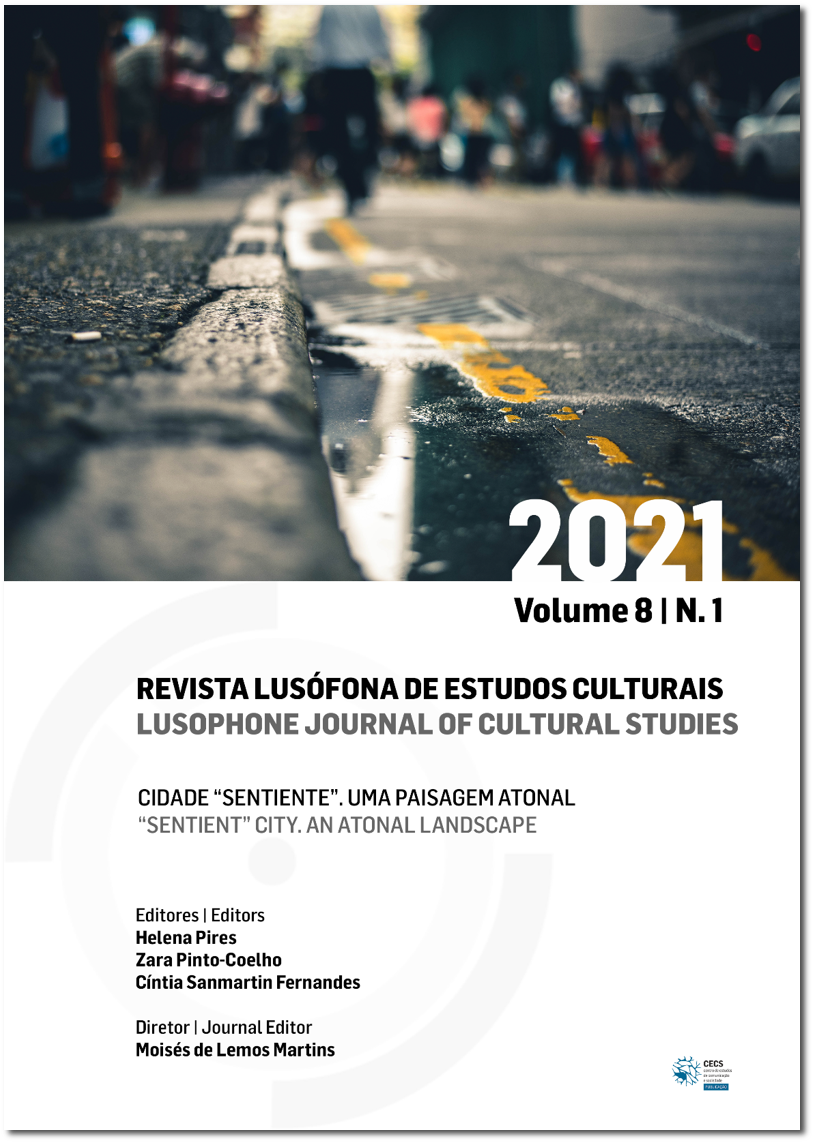Biopolitics of Light in Modern and Contemporary Cities: From a Disciplinary Light’s Eye to the Operational Lights of Control
DOI:
https://doi.org/10.21814/rlec.3211Keywords:
biopolitics, genealogy, light, media, politicsAbstract
In this article, we seek to explain some of the relationships between light and biopolitics in modern and contemporary cities. We consider light as an external stimulation capable of not only impacting and sensitizing bodies, but also influencing them in different ways and to different degrees. Based on this premise, we ask ourselves how, in modernity and in contemporary times, the luminous materialities and practices of urban space have the capacity to influence, determine, capture, monitor, discipline and control the opinions, discourses and practices of individuals. In order to outline some partial elements of response to this wide-ranging problem, we first try to demonstrate how public lighting in modern Paris can be considered a disciplinary technology. Then, we ask how light can, even today, participate in different power strategies. Starting with Paul Virilio (2002), we argue that there has been a shift in control strategies through light in relation to previous times. Subsequently, a distinction is proposed by the author, outlining two regimes: the first, coming from modernity, is characterized by the use of “direct light”; to this, we can now add a second regime of “indirect light”, characteristic of societies of control. Thereby, we attempt to denaturalize our relationship with light, in the context of western culture, and recognize its role in the service of photo-politics, a term that we propose to designate some of the (bio)political instrumentalizations of light. Finally, analyzing contemporary insurgent luminous artworks and practices, we reflect on the possible strategies through which insurgent lights could be raised.
Downloads
References
Abufom Silva, P. (2020, 4 de março). Los seis meses que transformaron Chile: Balance transitorio de la revuelta contra la precarización de la vida. Rebelión. https://rebelion.org/los-seis-meses-que-transformaron-chile/
Benjamin, W. (2009). Passagens (I. Aron & C. P. B.Mourão, Trad.). UFMG. (Trabalho original publicado em 1982)
Boileau, N. (1872). Œuvres poétiques de Boileau, tome premier. Publication de l’Imprimerie Générale. https://fr.wikisource.org/wiki/Boileau_-_%C5%92uvres_po%C3%A9tiques/Satires/Satire_VI
Canelo, T. [@tribitrip]. (2019, 14 de dezembro). Fotografias das manifestações chilenas em Santiago [Fotografias]. https://www.instagram.com/p/B6DMl2xJyM3/
Crary, J. (2016). 24/7 Capitalismo tardio ou os fins do sono (J. Toledo Jr., Trad.). Ubu Editora. (Trabalho original publicado em 2013)
Deleuze, G. (2013). Conversações. Editora 34.
Delumeau, J. (2009). História do medo no ocidente 1300-1800 (M. L. Machado, Trad.). Companhia das Letras. (Trabalho original publicado em 1978)
Dewey-Hagborg, H. (s.d.-a). Stanger visions. https://deweyhagborg.com/projects/stranger-visions
Dewey-Hagborg, H. (s.d.-b). The official biononymous guidebooks. https://deweyhagborg.com/projects/the-official-biononymous-guidebooks
Ehmann, A., Espada, H., & Barzon, M. (2019). Catálogo da exposição ‘Harun Farocki: quem é responsável?’. Instituto Moreira Salles.
Farocki, H. (Realizador). (2003). Erkennen und Verfolgen [Filme]. Harun Farocki Filmproduktion.
Farocki, H. (Realizador). (2004). Gegen-Musik [Filme]. Harun Farocki Filmproduktion; Le Fresnoy.
Figuier, L. (1867). Les merveilles de la science. https://fr.wikisource.org/wiki/Livre:Figuier_-_Les_Merveilles_de_la_science,_1867_-_1891,_Tome_4.djvu
Fœssel, M. (2017). La nuit: Vivre sans témoin. Éditions autrement.
Foucault, M. (1999). Vigiar e punir: Nascimento da prisão (M.T. C. Albuquerque & J. A. G. Albuquerque, Trad.). Editora Vozes. (Trabalho original publicado em 1975)
Hourdeaux, J. (2020, 17 de novembro). Loi «sécurité globale»: Un patchwork sécuritaire examiné à l’Assemblée. Mediapart. https://www.mediapart.fr/journal/france/171120/loi-securite-globale-un-patchwork-securitaire-examine-l-assemblee
Juazeiro do Norte. (2018, 6 de novembro). Juazeiro do Norte lança projeto de PPP para ‘smart city’. https://www.juazeirodonorte.ce.gov.br/noticia/5553-juazeiro-do-norte-lanca-projeto-de-ppp-para-smart-city/
Machado, R. (2019). Por uma genealogia do poder. In M. Foucault, Microfísica do poder (pp. 7–34). Paz & Terra.
Número de usuários únicos de celular chega a cinco bilhões no mundo. (2018, 27 de fevereiro). O Globo. https://oglobo.globo.com/economia/numero-de-usuarios-unicos-de-celular-chega-cinco-bilhoes-no-mundo-22436866
Preciado, P. B. (2020). Aprendendo do vírus (A. L. Braga & D. Kraus, Trad.). n-1 edições. https://www.n-1edicoes.org/textos/26
Schivelbusch, W. (1993). La nuit désenchantée (A. Weber, Trad.). Éditions Gallimard. (Trabalho original publicado em 1983)
Sibilia, P. (2002). O homem pós-orgânico. Corpo, subjetividade e tecnologias digitais. Relume Dumará.
Vertov. D. (Realizador). (1929). Man with a movie camera [Filme]. All-Ukrainian Photo Cinema Administration.
Virilio, P. (1994). A máquina de visão (P. R. Pires, Trad.). José Olympio Editora. (Trabalho original publicado em 1988)
Virilio, P. (2002). L´inertie polaire. Christian Bourgois Editeur.
Downloads
Published
How to Cite
Issue
Section
License
Copyright (c) 2021 Revista Lusófona de Estudos Culturais

This work is licensed under a Creative Commons Attribution 4.0 International License.
Authors own the copyright, providing the journal with the right of first publication. The work is licensed under a Creative Commons - Atribuição 4.0 Internacional License.








